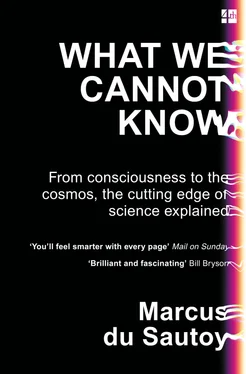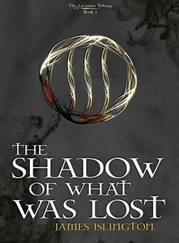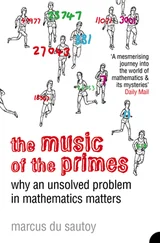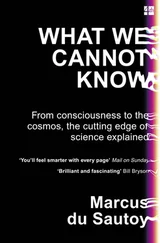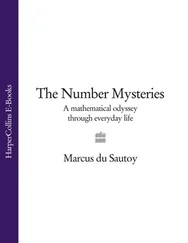This isn’t simply a case of abstract mathematical speculation. Evidence of such collisions has been observed in the planets orbiting the binary star Upsilon Andromedae. Their current strange orbits can be explained only by the ejection of an unlucky planet sometime in the star’s past. But before we head for the hills, the simulations reveal that it will take several billion years before Mercury might start to misbehave.
What of my chances to predict the throw of the dice that sits next to me? Laplace would have said that, provided I can know the dimensions of the dice, the distribution of the atoms, the speed at which it is launched, its relationship to its surrounding environment, theoretically the calculation of its resting point is possible.
The discoveries of Poincaré and those who followed have revealed that just a few decimal places could be the difference between the dice landing on a 6 or a 2. The dice is designed to have only six different outcomes, yet the input data ranges over a potentially continuous spectrum of values. So there are clearly going to be points where a very small change will flip the dice from landing on a 6 to a 2. But what is the nature of those transitions?
Computer models can produce very good visual representations that give me a handle on the sensitivity of various systems to the starting conditions. Next to my Vegas dice I’ve got a classic desktop toy that I can play with for hours. It consists of a metal pendulum that is attracted to three magnets, coloured white, black and grey. Analysis of the dynamics of this toy has led to a picture that captures the ultimate outcome of the pendulum as it starts over each point in the square base of the toy. Colour a point white if starting the pendulum at this point results in it ending at the white magnet. Similarly, colour the point grey or black if the ultimate destination is grey or black. This is the picture you get:

As in the case of population dynamics, there are regions which are entirely predictable. Start close to a magnet and the pendulum will just be attracted to that magnet. But towards the edges of the picture I find myself in far less predictable terrain. Indeed, the picture is now an example of a fractal.
There are regions where there isn’t a simple transition from black to white. If I keep zooming in, the picture never becomes just a region filled with one colour. There is complexity at all scales.
A one-dimensional example of such a picture can be cooked up as follows. Draw a line of unit length and begin by colouring one half black and the other white. Then take half the line from the point 0.25 to 0.75 and flip it over. Now take the half in between that and flip it over again. If we keep doing this to infinity then the predicted behaviour around the point at 0.5 is extremely sensitive to small changes. There is no region containing the point 0.5 which has a single colour.
There is a more elaborate version of this picture. Start again with a line of unit length. Now rub out the middle third of the line. You are left with two black lines with a white space in between. Now rub out the middle third of each of the two black lines. Now we have a black line of length 1⁄ 9, a white line of length 1⁄ 9, a black line of length 1⁄ 9, then the white line of length 1⁄ 3that was rubbed out on the first round, and then a repeat of black–white–black.

You may have guessed what I am going to do next. Each time rub out the middle third of all the black lines that you see. Do this to infinity. The resulting picture is called the Cantor set, after the German mathematician Georg Cantor, whom we will encounter in the last Edge, when I explore what we can know about infinity. Suppose this Cantor set was actually controlling the outcome of the pendulum in my desktop toy. If I move the pendulum along this line, I find that this picture predicts some very complicated behaviour in some regions.
A rather strange calculation shows that the total length of the line that has been rubbed out is 1. But there are still black points left inside: 1⁄ 4is a point that is never rubbed out, as is 3⁄ 10. These black points, however, are not isolated. Take any region round a black point and you will always have infinitely many black and white points inside the region.
What do the dynamics of my dice look like? Are they fractal and hence beyond my knowledge? My initial guess was that the dice would be chaotic. However, recent research has turned up a surprise.
A Polish research team has recently analysed the throw of a dice mathematically, and by combining this with the use of high-speed cameras they have revealed that my dice may not be as chaotic and unpredictable as I first feared. The research group consists of father-and-son team Tomasz and Marcin Kapitaniak together with Jaroslaw Strzalko and Juliusz Grabski, and they are based in Lódź. In their paper in the journal Chaos, published in 2012, the team draw similar pictures to those for the magnetic pendulum, but the starting positions are more involved than just two coordinates because they have to give a description of the angle at which the cube is launched and also the speed. The dice will be predictable if for most points in this picture when I alter the starting conditions a little the dice ends up falling on the same side. I can think of the picture being coloured by six colours corresponding to the six sides of the dice. The picture is fractal if however much I zoom in on the shape I still see regions containing at least two colours. The dice is predictable if I don’t see this fractal quality.
The model the Polish team considered assumes the dice is perfectly balanced like the dice I brought back from Vegas. Air resistance, it turns out, can be ignored as it has very little influence on the dice as it tumbles through the air. When the dice hits the table a certain proportion of the dice’s energy is dissipated, so that after sufficiently many bounces the dice has lost all kinetic energy and comes to rest.
Friction on the table is also key, as the dice is likely to slide in the first few bounces but won’t slide in later bounces. However, the model explored by the Polish team assumed a frictionless surface as the dynamics get too complicated to handle when friction is present. So imagine throwing the dice onto an ice rink.
I’d already written down equations based on Newton’s laws of motion for the dynamics of the dice as it flies through the air. In the hands of the Polish team they turn out not to be too complicated. It is the equations for the change in dynamics after the impact with the table that are pretty frightening, taking up ten lines of the paper they wrote.
They discovered that if the amount of energy dissipated on impact with the table is quite high, the picture of the outcome of the dice does not have a fractal quality. This means that if one can settle the initial conditions with appropriate accuracy, the outcome of the throw of my dice is predictable and repeatable. This predictability implies that, more often than not, the dice will land on the face that was lowest when the dice is launched. A dice that is fair when static may actually be biased when one adds in its dynamics.
But as the table becomes more rigid, resulting in less energy being dissipated and hence the dice bouncing more, I start to see a fractal quality emerging.
Читать дальше
